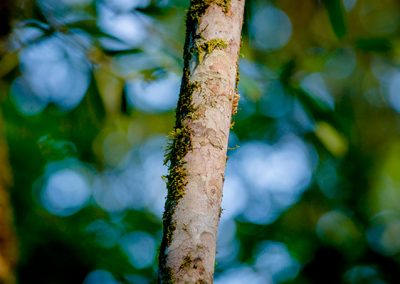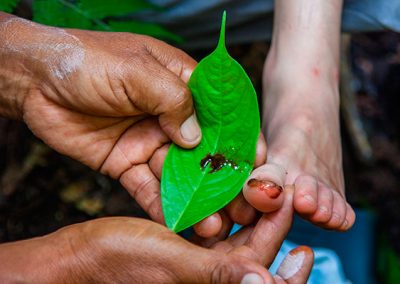Dragon’s Blood
Croton lechleri
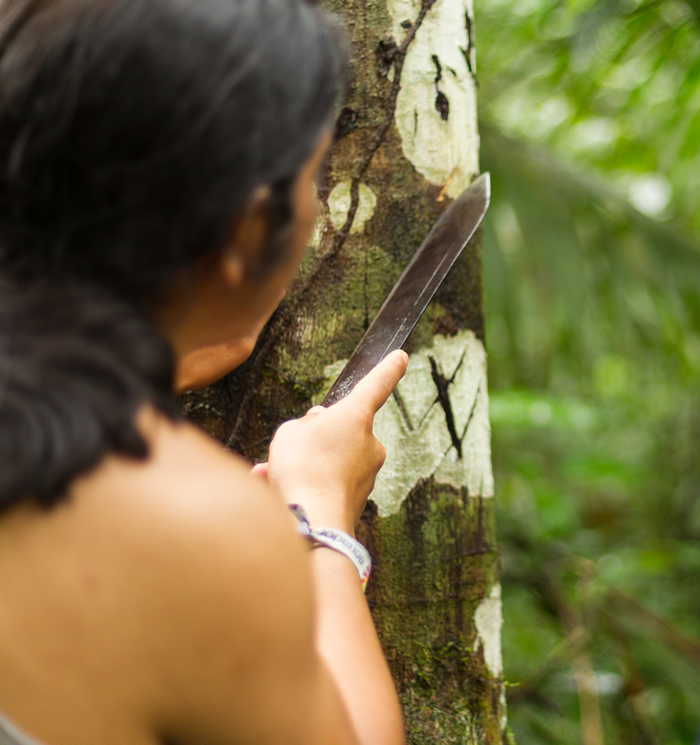
Author:
Ingrid Naiman
English Name: Dragon’s Blood
Spanish Names: Sangre de grado (Peru), Sangre de drago (Ecuador)
Natural Habitat: Northwestern South America
Part Used: Tree Resin
Preparations: Liquid sap, sometimes diluted with 10% alcohol. The sap can be dried and reconstituted.
.
Dragon’s Blood is harvested by making cuts in the bark of the tree. The red resin (latex) is collected and used as a sterile bandage that turns almost transparent when drying. It will eventually wash off, but is not usually lost with a single wash.
In addition to stopping the bleeding, it relieves pain and protects the open area from infection. It can also be taken internally to stop hemorrhaging. Very little resin is needed to achieve this result.
The resin is normally used full strength but it is thick and will become hard after some time. Adding a little alcohol, 10%, will usually prevent the liquid from drying in the bottle. It will also reconstitute dried resin.
Dragon’s blood is intensely bitter in taste and has an extremely high antioxidant rating. Some online sources state that it is an anticoagulant. Observations in darkfield microscopy suggest this is not true. It works by causing the red blood cells to cluster, not exactly an erythrocyte aggregation but a strategy to reduce bleeding.
When used in surgery, it reduces bleeding as well as post-surgical pain and trauma. It also obviates the need for adhesive bandages and the discomfort involved in removing the bandages.
Sangre de grado has been used to treat skin cancers as well as to inhibit the growth of internal tumors.
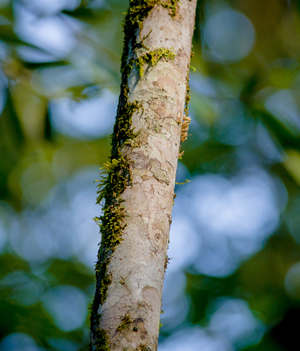
Croton lechleri grows in the northwestern area of South America. When cuts are made in the bark, a red sap exudes. This is collected and bottled. Sometimes, it is dried and used as an ingredient in herbal preparations or as incense.
Image Credits
Making Cuts in Trunk of Tree
© Ammit
Dreamstime ID: 61154514
Trunk of Sangre de Grado
© Pablo Hidalgo
ID: 69471273
Many experts throughout history have regarded cancer salves and pastes as the most thorough, safe, and efficacious way to treat cancer, especially skin and breast cancers but also cancers of other organs. In this book, Ingrid Naiman meticulously traces the use of such products in ancient India and by Hildegard of Bingen, Native Americans, and modern physicians. She provides detailed instructions for making and using the salves, a fair comparison of the pros and cons, and eight pages of color pictures showing responses to the products. Visit her Cancer Salves site for more information, answers to frequently asked questions, and a checklist for people facing cancer.
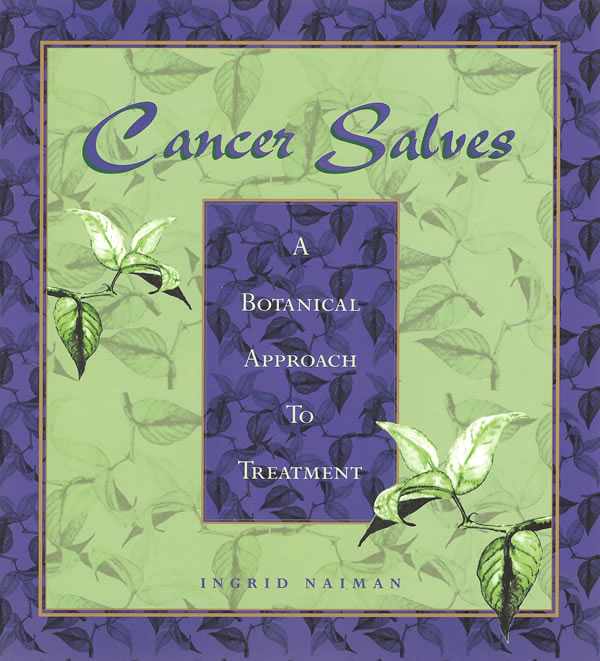
Cancer Plants
Donations
Your donations are greatly appreciated.
Information
Newsletter
To be notified of new posts to this site, please subscribe, using the link button below. You can cancel your subscription at any time you choose.
Copyright by Dr. Ingrid Naiman 2003 and 2018
All Rights Reserved || Institute for Invisible Epidemics

